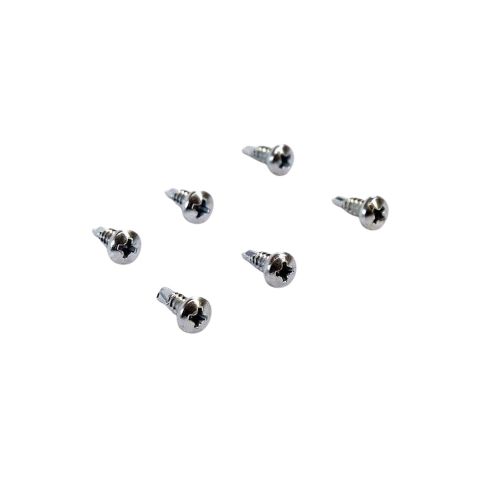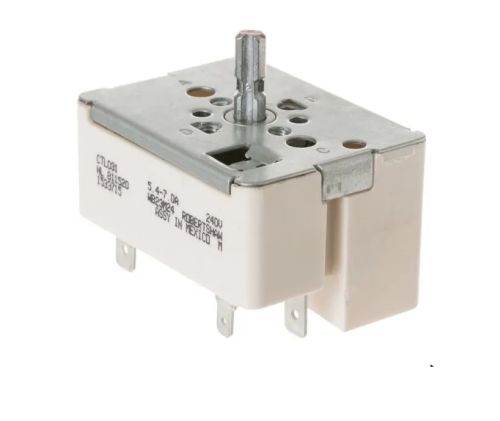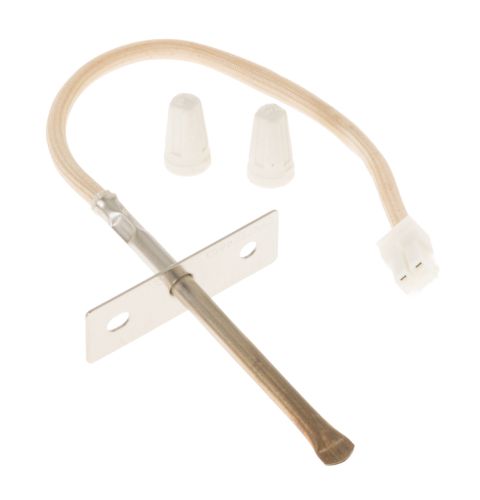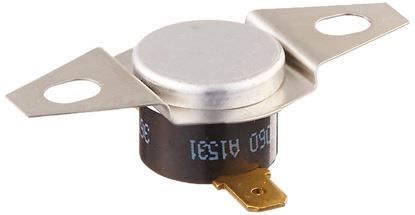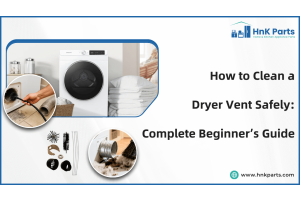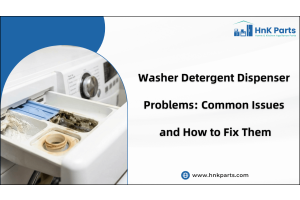
The Ultimate Guide to Spring Cleaning for an Organized Home
Spring cleaning is more than just a chore; it's a revitalizing ritual that breathes fresh life into your home and rejuvenates your mind. As the days lengthen and the natural world awakens, it's the perfect time to declutter, deep clean, and organize your living space, creating a haven of hygiene and tranquility. A clean home reduces stress and enhances well-being, offering a sanctuary from the chaos of daily life. This guide provides a comprehensive approach to spring cleaning, focusing on deep cleaning strategies and efficient organization tips for your home and essential appliances, ensuring a fresh start this season.
| Table of Contents: Kitchen Deep Clean: Where to Start Spring Cleaning Key Appliances Laundry Room Essentials Final Touches: Whole-Home Refresh |
Kitchen Deep Clean: Where to Start
The kitchen requires a thorough spring cleaning to ensure hygiene and efficiency. Here’s how to get started:
-
Declutter countertops, cabinets, and drawers: Clear everything off your countertops. Remove small appliances, utensils, and décor items. Sort through your cabinets and drawers, discarding expired food, unused gadgets, and unnecessary items. Donate or discard anything you no longer need or use. Clearing out the clutter will make a significant difference in the overall tidiness of your kitchen.
-
Disinfect and clean surfaces, Backsplash, and Sink: Once the clutter is gone, it’s time to deep clean all surfaces. Use a quality all-purpose cleaner to wipe down countertops, paying special attention to areas prone to grime and spills. Clean the backsplash with a suitable cleaner to remove grease and food splatters. Scrub the sink thoroughly, paying attention to the drain and faucet areas, to eliminate bacteria and odors.
-
Organize pantry and food storage zones: A well-organized pantry not only saves space but also prevents food waste. Remove everything from your pantry shelves and check expiration dates. Dispose of any expired or stale items. Wipe down the shelves with a damp cloth and organize remaining items by category. Use clear containers to store loose items like cereals, grains, and snacks. Label everything clearly to make it easy to find what you need and keep track of expiration dates.
How to Organize Kitchen Cabinets: 10 Simple and Effective Tips
Spring Cleaning Key Appliances
Appliances are the workhorses of our homes, and spring cleaning is the perfect time to give them some much-needed attention.
1. Stove & oven
A clean stove and oven not only improve cooking performance but also reduce the risk of fire hazards.
-
Remove and clean burner grates and knobs: Start by removing the burner grates and knobs from your stove. Soak the grates in a solution of warm, soapy water to loosen any baked-on food. Scrub them thoroughly with a brush before rinsing and drying. Wipe down the knobs with a damp cloth and mild detergent to remove grease and grime.
-
Use oven self-clean feature: If your oven has a self-clean feature, now is the time to use it. Before starting the self-clean cycle, remove any large food particles or debris. For manual cleaning, create a paste of baking soda and water and spread it over the interior surfaces of the oven. Let it sit overnight, then scrub away the grime with a damp cloth.
-
Inspect for residue, food spills, and grease buildup: After cleaning, inspect the stove and oven for any remaining residue, food spills, or grease buildup. Pay close attention to corners and hard-to-reach areas. Use a specialized stove and oven cleaner for stubborn stains. Regularly cleaning up spills as they happen can prevent future buildup.
2. Dishwasher
A clean dishwasher ensures your dishes are sparkling and sanitary.
-
Remove filter and spray arms for a deep clean: Start by removing the dishwasher filter, usually located at the bottom of the appliance. Remove the spray arms and use a toothpick or small brush to clear any clogs in the nozzles.
-
Run a vinegar and baking soda cycle: Place a cup of white vinegar in a dishwasher-safe bowl on the top rack of the empty dishwasher. Run a hot water cycle to help remove any lingering odors, food debris, and mineral buildup.
-
Check for mold, mildew, and food debris: After the cycle, check the dishwasher for any signs of mold, mildew, or remaining food debris. Wipe down these areas with a solution of bleach and water to kill any mold or mildew.
3. Refrigerator
A clean refrigerator is essential for food safety and preventing unpleasant odors.
-
Empty shelves and discard expired items: Begin by removing all items from the refrigerator shelves and drawers. Check expiration dates and discard any expired or spoiled food. This is also a good time to take inventory of what you have and plan your meals accordingly.
-
Wipe interior surfaces with mild detergent: Use a mild detergent and warm water to wipe down all interior surfaces, including shelves, drawers, and walls. Pay attention to any spills or stains and scrub them gently. Rinse with clean water and dry thoroughly. Baking soda can also be used to wipe down the fridge, helping to deodorize it.
-
Clean condenser coils and replace water filter: Locate the condenser coils, usually at the back or bottom of the refrigerator. Use a vacuum cleaner with a brush attachment to remove any dust or debris. If your refrigerator has a water filter, replace it according to the manufacturer's instructions. This will ensure your water and ice are clean and fresh.
Laundry Room Essentials
The laundry room often gets overlooked, but cleaning these appliances ensures they operate efficiently and safely.
1. Washing machine
-
Clear the detergent drawer and rubber seal: Take out the detergent drawer and rinse it with warm water to eliminate any residue. Clean the rubber seal around the door using a bleach and water solution to prevent the development of mold and mildew.
-
Execute a hot cycle with vinegar and baking soda: Place a cup of white vinegar and half a cup of baking soda in the empty washing machine drum. This aids in eliminating soap residue, mineral deposits, and unpleasant smells.
-
Inspect and clean the drain pump filter: Find the drain pump filter, which is typically located at the lower front of the washing machine. Gently take out the filter and clear away any lint, debris, or tiny objects. Rinse the filter well before putting it back in. This helps prevent blockages and guarantees effective drainage.
2. Dryer
-
Remove lint from lint trap and dryer drum: Clean the lint trap after every load to maintain dryer efficiency and prevent fire hazards. Remove any lint from the dryer drum with a damp cloth.
-
Clean the vent and exhaust hose for safety: Disconnect the vent from the back of the dryer and vacuum out any lint buildup. Clean the exhaust hose with a long brush or vacuum attachment. A clogged dryer vent can cause the dryer to overheat and potentially start a fire.
-
Wipe exterior and inspect dryer drum for residue: Wipe down the exterior of the dryer with a damp cloth and mild detergent. Inspect the dryer drum for any residue or stains and clean them with a suitable cleaner.
Final Touches: Whole-Home Refresh
With the kitchen and laundry appliances sparkling, it’s time to focus on the rest of your home.
-
Dust Ceiling Fans, Baseboards, and Blinds: Use a duster with an extendable handle to reach ceiling fans and high corners. Wipe down baseboards with a damp cloth to remove dust and grime. Clean blinds with a microfiber cloth or a specialized blind cleaner.
-
Vacuum under furniture and clean windows: Move furniture to vacuum underneath, reaching hidden dust and debris. Clean windows with a glass cleaner, wiping both the interior and exterior surfaces. Don't forget the window and ledges.
-
Add air purifiers: Improve indoor air quality by adding air purifiers to remove pollutants and allergens. Incorporate fresh plants to help filter the air and add a touch of greenery to your home.
Routine spring cleaning is essential for maintaining a healthy, organized, and comfortable living space. By thoroughly cleaning your home and its appliances, you enhance their efficiency and longevity while also creating a more enjoyable atmosphere. Remember to clean beneath furniture and appliance surfaces and to declutter storage areas monthly for upkeep. Developing a seasonal maintenance checklist can help you keep track of these tasks, ensuring that your home remains a warm and rejuvenating retreat throughout the year. HnK Parts offers a wide selection of high-quality kitchen appliance parts from top-selling manufacturers at cost-effective prices. From dishwashers and dryers to microwaves and refrigerators.
FAQs
How often should appliance filters (like in dishwashers or fridges) be replaced?
Appliance filters should typically be replaced every 3 to 6 months, depending on usage and manufacturer guidelines. Always refer to your user manual for specific recommendations.
Can I use natural cleaners like lemon and vinegar on all appliances?
While vinegar and lemon are great natural cleaners, avoid using them on rubber seals, aluminum parts, or areas with delicate finishes, as they can cause wear or corrosion over time.


